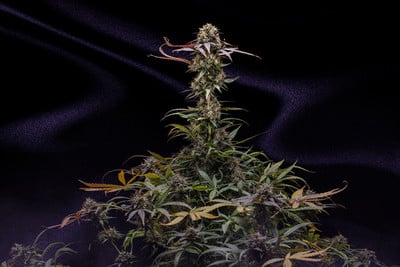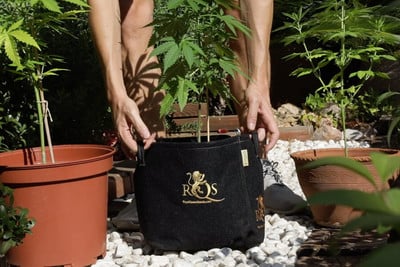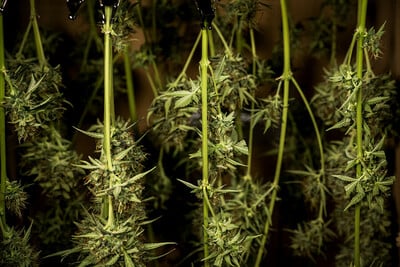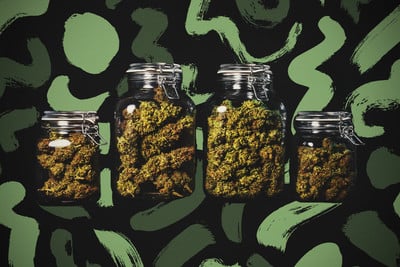.
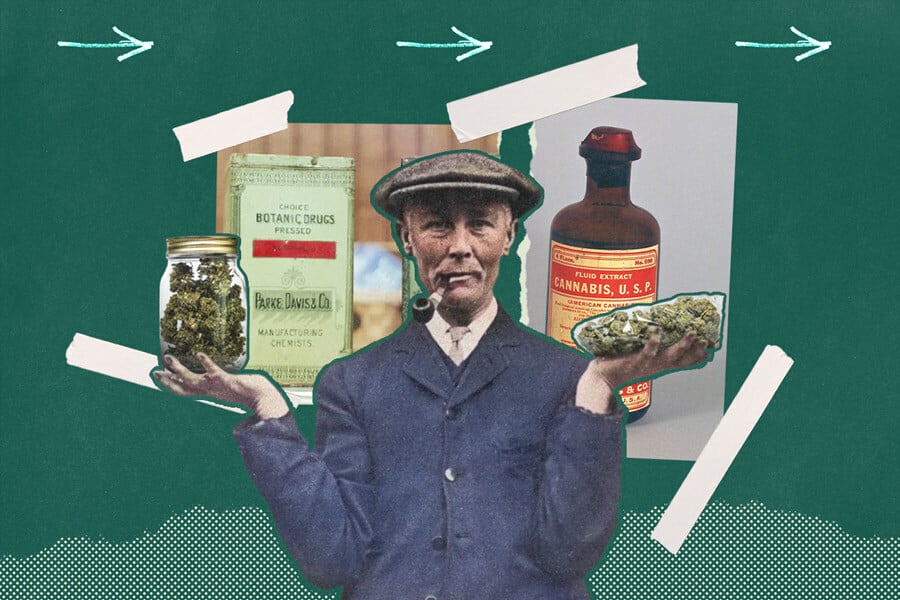
How Has Cannabis Packaging Evolved Over the Years?
Cannabis packaging has changed with the legal status of the plant, and therefore tells a compelling story in itself. Here we take a look at these changes, exploring how weed packaging has evolved, and what type of packaging is best for storing your own stash.
Contents:
Who would've thought that packaging could be an interesting topic of conversation? Well, it turns out it can be! The history of cannabis packaging is inextricably linked with the history of the herb itself, so we can trace the legal and social developments surrounding this plant by taking a look at how it has been protected and contained.
In this article, we break down why cannabis needs to be packaged, the different types of packaging available, and how weed packaging has evolved from the 1800s to the present day.
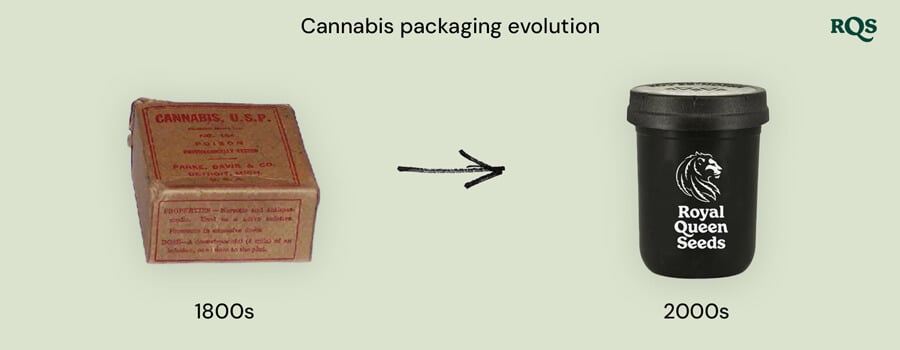
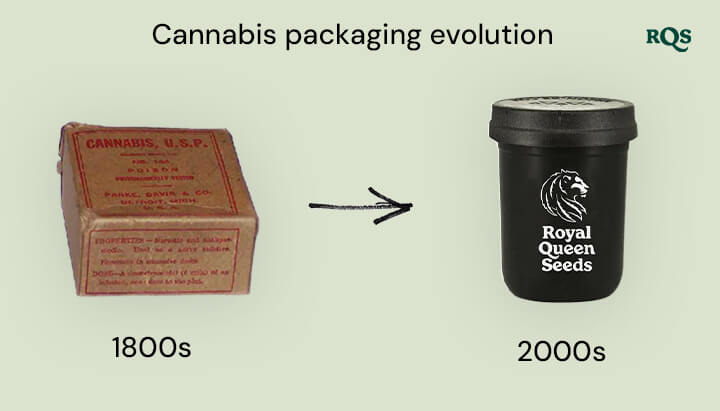
Why Does Cannabis Need Packaging?
Cannabis needs packaging for much the same reason as most consumable products—to keep it fresh and intact. You wouldn’t want to carry an open chocolate bar around in your pocket, and the same goes for your sticky bud. It would collect dust, fall apart, get lost, or lose quality in various other ways. Furthermore, if not adequately protected, the desirable cannabinoids and terpenes in weed—responsible for the effects and flavours of cannabis—will degrade over time, making for a less potent and less flavourful experience.
So, primarily, cannabis needs to be packaged to protect its chemical constituents and to prevent any structural damage.
Other reasons are:
- To easily store certain amounts
- To label different strains
- To ensure it is sealed and untampered with
- To prevent the aroma from escaping
Common Types of Cannabis Packaging
Below, we’ll review some of the most common types of cannabis packaging—you’ll probably be familiar with at least some of these! Over the last few years, cannabis storage has gone from rudimentary to highly advanced, with more stable, airtight options that seek to really preserve the quality of the weed; but we’ll get to that after the humble baggie.
-
Plastic Baggies
Baggies were once so exciting. But over time, they’ve been ousted in favour of more reliable packaging. However, we shouldn’t overlook the importance these little plastic bags have played, and continue to play, in cannabis and wider drug culture, as most people’s drugs come stored in these innocuous pieces of packaging.
Great for short-term storage and transportation, baggies are not truly air or moisture tight—even the ones that zip—and so cannabis will tend to degrade if stored in them over the long term.
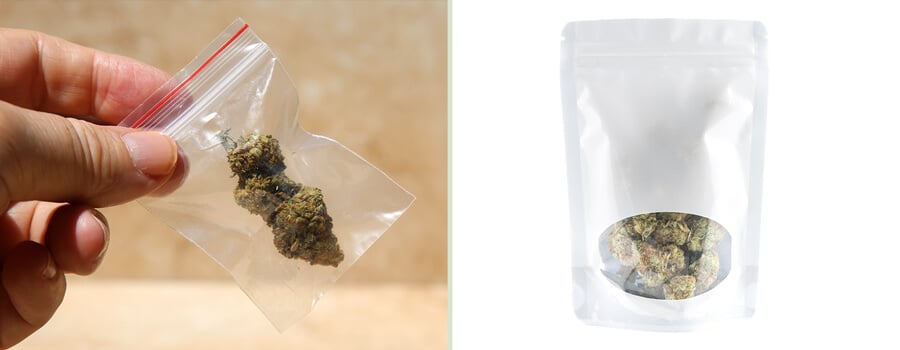
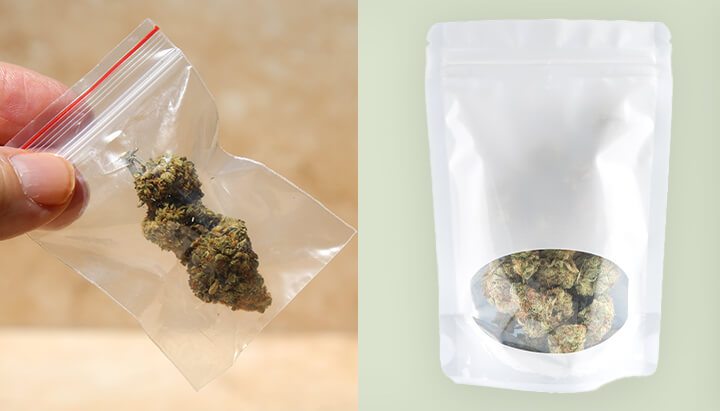
-
Mylar Bags
Mylar bags for “food storage” are the contemporary iteration of the plastic baggie, but with some legitimate improvements. Mylar is the same material from which space blankets are made, and these bags protect their contents better than your average plastic baggies. One reason is that at least one side is totally opaque, which means the contents are protected from light, which can degrade THC. Another is that they can be fully sealed until they are first opened, which means that they can be kept in storage indefinitely.
-
Airtight Containers
The world is abound with stash jars now—just take a look at our shop!
They come in metal, silicone, and other materials, and all the best ones should fully seal, protecting their contents from light, air, and moisture. They come in a range of shapes and sizes to suit all needs, whether it’s the long-term storage of a whole crop or simply to carry around a few buds in your bag.
-
Glass Jars
Glass jars are an old favourite. Some are properly sealable and airtight, while others just have screw-on lids that allow for air and moisture exchange (these are best avoided).
Glass jars such as Kilner jars are great for long-term storage so long as they are kept in a dark place. But if kept in the open, UV light will degrade the cannabinoid content of any weed kept inside, so they are not the perfect choice in this case.
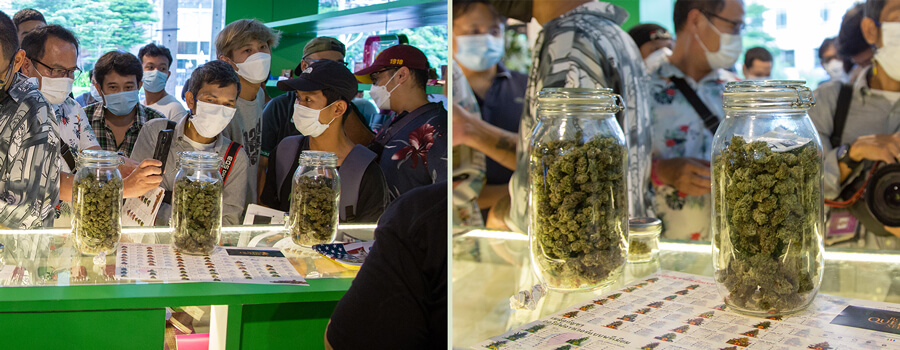
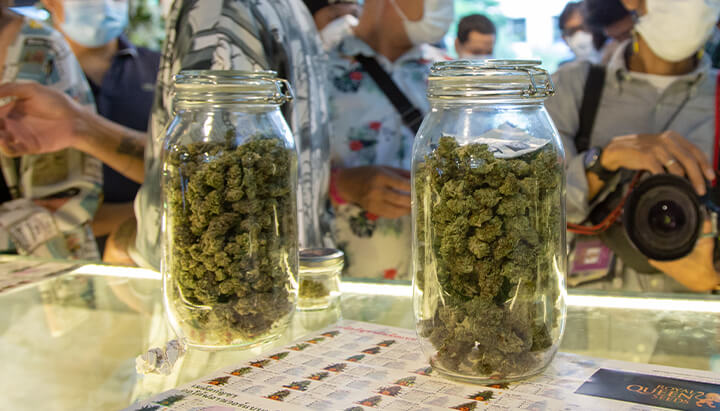
Cannabis Packaging and Design: A Brief History
Cannabis packaging has certainly changed over time. While we won’t delve into the thousands of years of cannabis packaging history, we will offer a brief overview of major developments starting in the 1800s up to the present day.
-
1800s
In the 1800s, cannabis was available from pharmacies, where it was chiefly packed in airtight tin containers. Interestingly, it was already known that cannabis degrades in potency when exposed to UV light, hence the use of an opaque material. Later, tin was replaced in favour of glass and ceramic, and during the second half of the 1800s into the early 1900s, cannabis could even be purchased at general stores.
Cannabis was legal and easily accessible during this period, with labels clearly stating the contents. However, back then, there weren't many different strains, and the cannabinoid contents would not have been known.
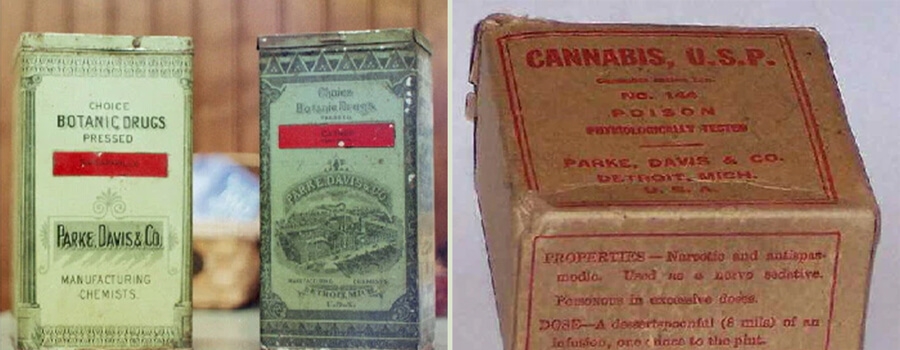
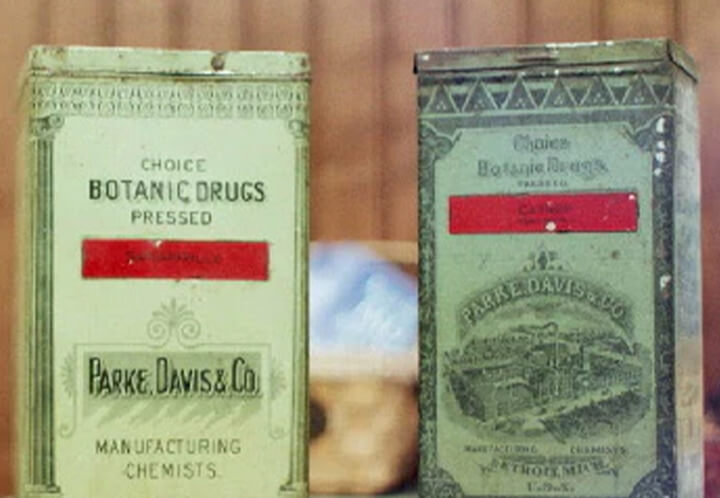
-
1900s
In the early 1900s, between 1906 and 1937, cannabis in the US (and much of the wider world) gradually fell into disrepute and became prohibited. During this time, packaging would have differed depending on where it was sourced. It might have come wrapped in paper, in glass containers, or in boxes made of various materials. As cannabis was not legal, there were no standardised forms of packaging.
This lack of standardisation is what led to plastic baggies dominating cannabis packaging during the latter quarter-century of the 1900s into the 2000s. Even today, baggies are the norm among many stoners in certain regions of the world, with some fortunate others enjoying increased access to commercially prepared and packaged weed products.
-
2000s
Baggies persist up to this day, but packaging has evolved to become more high-tech and tailored to the unique properties of cannabis. This has accelerated with the legalization of the plant—especially across North America.
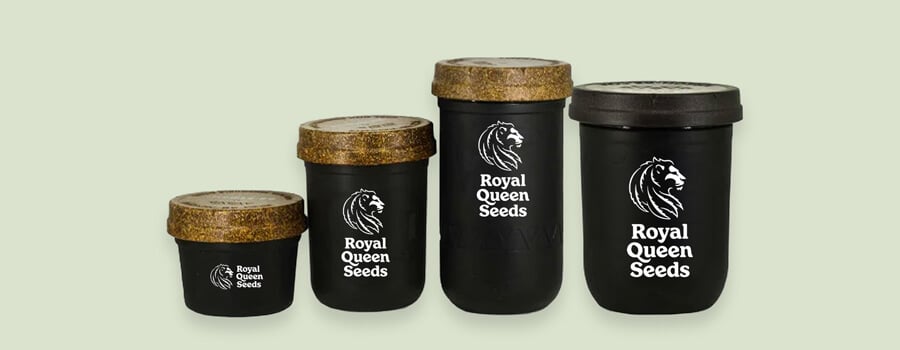
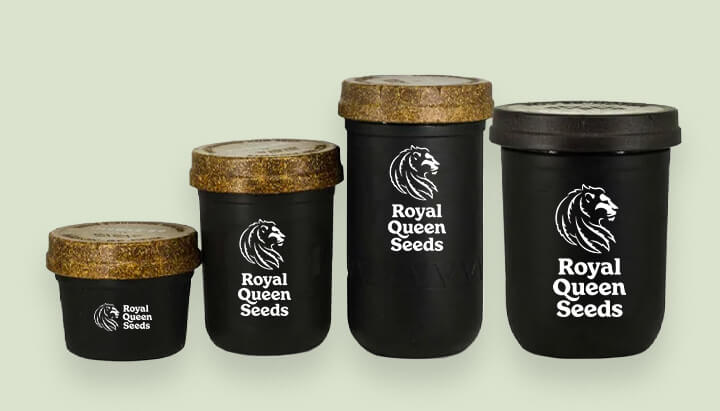
How Has Regulation Influenced the Evolution of Cannabis Packaging?
In the last decade or two, cannabis has become decriminalised or legalized across much of the Western world. From Canada to the US, to Uruguay, Portugal, and Morocco, cannabis laws are changing. Thanks to this, companies are now more comfortable openly designing packaging that is intended for cannabis.
And from this development has sprung up the Mylar packaging and stash jars already mentioned, as well as hydrogen packaging, which rapidly displaces oxygen with hydrogen before sealing. This replacement is helpful as oxidation is one of the main causes of cannabinoid degradation.
In places where cannabis can be legally bought, it is now even possible to buy it in child-proof packaging to keep it away from curious children.
What Are the Latest Trends in Cannabis Packaging Design?
Like with all products, branding has become widespread in the cannabis world. Cannabis seed banks and breeders work with their marketing teams to create ever-more potent, flavourful, and sensational strains with audacious names and creative packaging, in a bid to get the attention of a wider and increasingly discerning customer base. With this in mind, modern cannabis packaging is often adorned with colourful, tantalising, and dramatised imagery. On the other hand, some brands opt for a more stylish, minimal approach to appeal to those less-interested in traditional stoner marketing.
It wasn’t long ago that you’d stand in an alleyway to buy a gram of something without a name in a little plastic baggie. These days, you can walk into a dispensary and choose from a range of professionally grown products in customised packets. Even where cannabis remains illegal, drug dealers have professionalised beyond recognition, and buyers now have a huge choice of products that come properly sealed and sometimes even branded.
Which Cannabis Packaging Is the Most Effective?
Ultimately, the answer to this question depends on your needs and preferences. You can’t beat a good old baggie if you just want to carry a gram or two around with you. However, other forms of packaging preserve the cannabis better and trap the smell more effectively, if stealth is a concern of yours.
For long-term storage, it’s definitely better to go for something that is truly airtight and preferably opaque, otherwise your weed will degrade. While your stash won't immediately lose potency or taste when kept in baggies and other unsealed containers, over a prolonged period it will become less desirable. So keep that in mind, and store your cannabis with confidence!


























